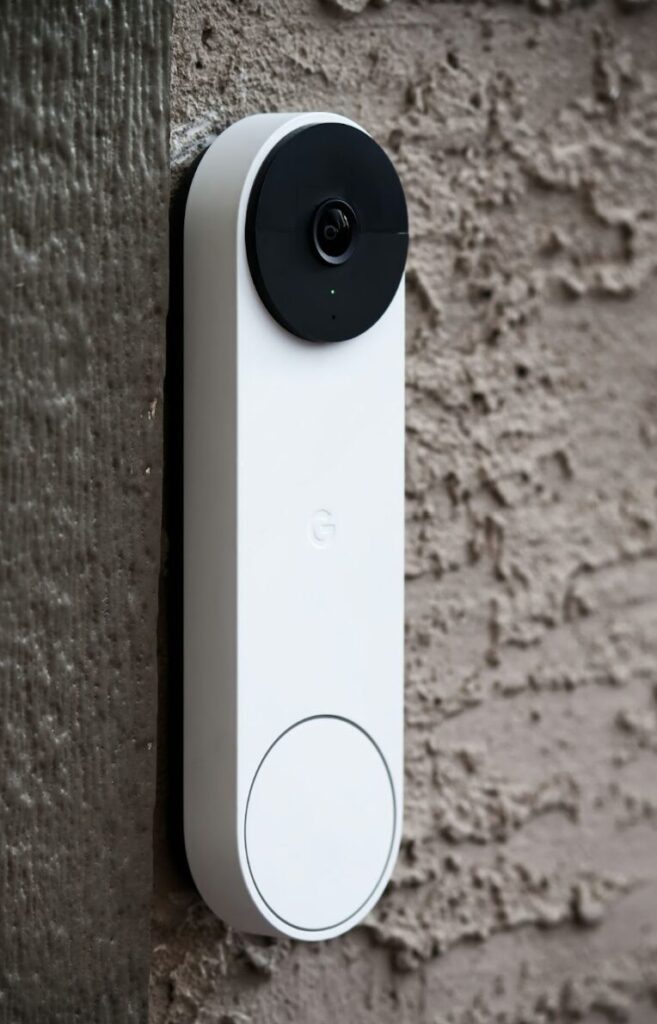Contrary to the past, when a home security system installation could cost a fortune, today, homeowners have the power to choose from a wide range of affordable options.
A professionally installed security system often comes with a hefty price tag and long-term contract, but you can take control and DIY an effective security system at a fraction of the price.
All it takes is a little research and planning to build a customized security system that fits your home’s unique needs.
Read on as we consider the essential components of a home security system that will ensure your castle is well-protected.
1. Security Cameras
Think of security cameras as your home’s vigilant guardians. They help you keep an eye on your property and serve as a powerful deterrent for would-be intruders.
When choosing cameras, consider both indoor and outdoor models.
Indoor cameras are great for monitoring high-traffic areas like living rooms and hallways. In contrast, outdoor cameras can watch over your yard, driveway, and entry points.
You’ll find many options out there…from wired cameras that provide constant, reliable feeds to wireless models that offer flexibility in placement.
Features to look for:
- ⬥night vision for round-the-clock monitoring
- ⬥motion detection to alert you of any unusual activity, and high-resolution imaging to capture clear, identifiable footage.
Place your cameras to capture wide-angle views of entry points and blind spots.
The idea is to have every square inch of your property within easy view of your cameras.
Depending on their location, multiple cameras trained on the same spot can be helpful, as different views can capture more of what’s happening around your home.
Tip:
When assembling a DIY home security system, consider building redundancy to build an extra layer of security.
2. Smart Locks and Door/Window Sensors
Smart locks and door/window sensors are crucial components of your security system, as they secure common entry points for thieves.
Smart locks eliminate the need for keys, a huge advantage for homeowners.
Some options include:
- ⬥keypad models for simple code access
- ⬥biometric locks or
- ⬥smartphone-controlled locks that you can use to lock or unlock your doors remotely
Combine these locks with sensors on your windows and doors, and you’ll have a considerable portion of your security in place.
Sensors are designed to alert you when a door or window is opened or tampered with, so you’ll immediately know if someone or something is trying to access your home.
Another benefit of these devices is that they can sync up with other smart home tools you might have.
3. Motion Sensors and Alarms
Motion sensors are the next level in home defense. If an unwanted intruder somehow slips inside, your motion sensors will alert you to their presence.
Different types of motion sensors:
- ⬥Passive infrared (PIR) – reliable and great for homes with pets
- ⬥Dual-tech – combines PIR with microwave tech that makes the sensors even more accurate
When a sensor is triggered, your alarm system takes over. Modern DIY alarms can send alerts to your phone, emit loud sirens to scare off intruders, and even notify local authorities.
When setting up motion sensors, think like an intruder. Place them in areas an intruder would likely pass through—hallways leading to bedrooms, the path from a back door to your home office, or near your most valuable possessions.
4. Smart Lighting and Video Doorbells
Smart bulbs can be programmed to turn on and off at random intervals when you’re away, creating the illusion that someone’s home—a classic but effective deterrent.
Video doorbells, on the other hand, are your front-door security guards. They let you see, hear, and speak to visitors from anywhere using your smartphone.
Whether it’s a delivery person, a neighbor, or an unexpected visitor, you’re always in the know. Many models also offer features like motion-triggered recording, ensuring you never miss a front-door event, even if the doorbell isn’t rung.
Each component plays a vital role in a comprehensive DIY home security system, from watchful security cameras and smart locks to vigilant motion sensors and intelligent lighting.
Why DIY?
The beauty of a DIY approach is the flexibility it offers. You can start small and expand your system as your needs (and budget) grow. This adaptability ensures that your security system always aligns with your changing circumstances, giving you peace of mind.
Maybe you begin with a few door sensors and a smart lock, then add cameras and motion sensors later.
Remember, the goal isn’t just to catch intruders—it’s to prevent break-ins altogether. A visible, well-designed security system often sends potential burglars looking for an easier target.
However, it’s important to note that DIY systems may not have the same level of professional monitoring and response as a professionally installed system.
So, take some time to research and choose components that best fit your home’s layout and your family’s lifestyle, and consider the potential risks and limitations of a DIY system.
Ultimately, the peace of mind that comes from knowing you’ve taken proactive steps to protect your home and loved ones is invaluable.
Safeguarding Your Home: How to Choose the Right Home Security System for You


